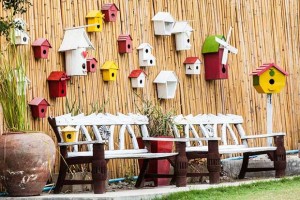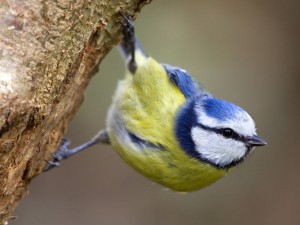Week 47 – 04 June 2017:
Birds That Share Your Neighbourhood
At the upcoming meetings of the American Ornithological Society in East Lansing, Michigan, one of the most important topics of conversation will be the ways in which birds are challenged by a world increasingly dominated by humans. There will be significant discussion of recent studies in the field of urban ornithology. Many bird species are well represented in towns and cities, and we are are starting to understand how urbanization influences bird abundance and distribution.
Less well studied is the influence of the urban environment on the construction of bird nests, and whether ectoparasites are more or less common in nests in cities. Given how much time and energy birds devote to building their nests, and how badly birds can be harmed by ectoparasites such as fleas and lice, this is an important gap in our knowledge.
James Reynolds and six of his colleagues at the University of Birmingham studied the nesting of Eurasian Blue Tits along urban gradients in 2014. These tits occupied nest boxes at thirty sites in Birmingham in England’s West Midlands. At the end of the breeding season, 131 nests were collected and disassembled. The component parts of the base and the lining of each nest were teased apart, and categorized as moss, grass, animal fibres such as fur, and materials that had been created by humans.
The most surprising outcome of the study was an apparent lack of influence of urban development on the nests of the tits that occupied Birmingham nest boxes. Nest bases were composed of moss, and they were lined by the other materials described above, but nests in different parts of the city were remarkably similar in their construction. Material that had been created by humans, such as plastic and dyed wool, was found in 73% of all nests, but the location of the nest along the urban gradient did not influence the amount of that material used.
The only ectoparasites recovered from the Blue Tit nests were fleas. Admittedly the flea population was pretty robust, averaging 184 fleas per nest. Flea abundance did not differ among nests in low, medium and high urbanization sites. The only factor that did influence parasite load was nest mass; heavier nests tended to have more fleas.
The results of a single study of a single species of bird cannot be used to paint too broad a picture. Reynolds and coworkers did not find compelling evidence of an impact of urbanization on the nesting of Blue Tits in Birmingham. That is not to say that significant impacts would not be found in other species in other urban centres. “We believe that research over the next few years will significantly improve our understanding of the breeding biology of a number of (city-dwelling bird) species and we encourage others in other large cities to respond to the challenge of working along their respective urban gradients.”
Stay tuned.
Reynolds, S. J. et al. 2016. Does the urban gradient influence the composition and ectoparasite load of nests of an urban bird species? Avian Biology Research 9:224-234.
Photo credits: bird nesting boxes – www.britishbirdlovers.co.uk; Blue tit photograph © David Chapman – www.saga.co.uk



